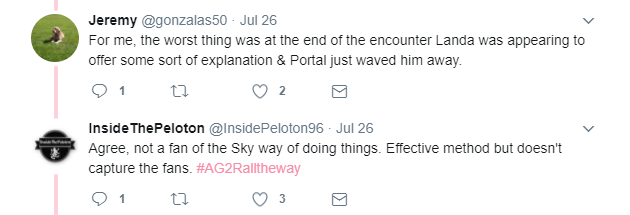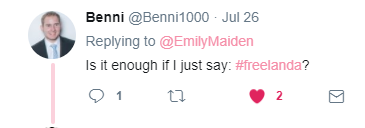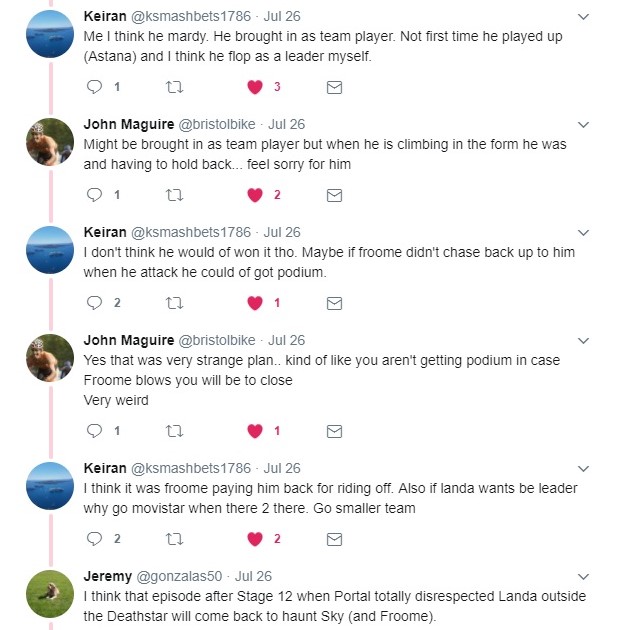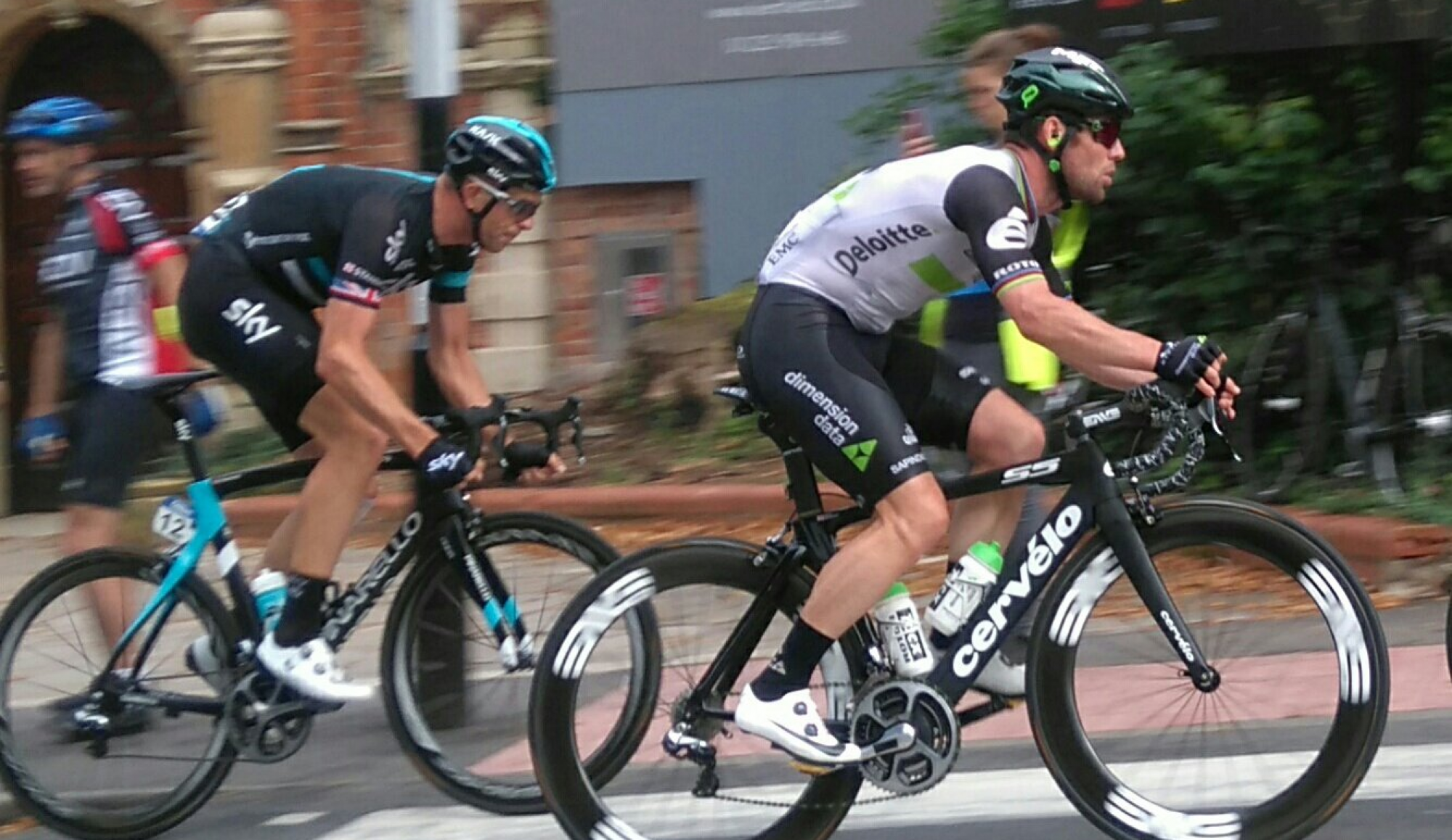
Month: August 2017
Race to the End of the World
This afternoon one of the most spectacular races in the calendar begins close to the Arctic Circle.
Here’s your guide to the Arctic Race of Norway, with thanks to Eliot Lietaer of Team Sport Vlaanderen-Baloise, who’ll be lining up on the start line today.

What is the Arctic Race?
A fairly new addition to the race calendar, the Arctic Race was first held in 2013 as a category 2.1 UCI Europe Tour event. From 2015 the race was classified as 2.HC. Fittingly, the inaugural edition was won by the Norwegian Thor Hushovd. Hushovd continued to be involved with the event as an official race ambassador.
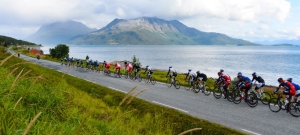
What’s the route like?
The route this year is made up of 4 stages, each designed to accommodate different styles of rider. This is a theme in the Arctic Race of Norway – to date we’ve seen overall victories going to a sprinter (Hushovd), climber (Kruijswijk), GC rider (Taaramaie) and Classics specialist (Moscon). Last year, Team Sky’s Moscon took home 500 kilograms of fish as well as the winners Blue & Orange Jersey!
The riders will cover a distance of 680km over the 4 stages of the race, cheered on from the roadside by enthusiastic fans, and cycling through some of the most spectacular scenery seen by the professional peloton. “Norway is a really nice country to race in” explains Eliot Lietaer of Sport Vlaanderen-Baloise, who is competing in his second Arctic Race. “The roads are really good, the hotels are nice – always good WiFi – and there are very friendly people cheering at the side of the road”.
The route this year is well suited to Lietaer’s style of racing, comprising one real climbers day, two for the sprinters – one a pure sprint day – and a rolling stage perfect for puncheurs, which includes some sharp climbs to test the legs.
“I’m really looking forward to the Arctic Race of Norway this year because it really suits me – three relatively flat stages and one mountain top finish where the GC will be decided and where I can show my real strength”.
Lietaer thrives in situations like this, and coming off the back of a great showing at the Vuelta a Burgos, don’t be surprised to see him mixing it at the sharp end. “I prefer stage races as I do very well at them. My recuperation is very good at the end of a stage race, and I’m still feeling strong and can go for a good result. The Tour de Wallonie and Vuelta a Burgos were my goals for the season as well as the Arctic Race – after that I’m only racing a few one day events. I hope to do well as I have ambitions to ride for a WorldTour team next year, so every race counts”.
What can we expect to see over the 4 days of racing?
Amazing scenery, Norwegian flags and some great racing!
“The style of racing is pretty similar to races in traditional cycling countries” explains Lietaer. One thing that will be different is the amazing backdrop. “I rode the Arctic Race of Norway once a few years ago, and it was a really nice experience, as we finished one stage at a place called ‘The End of the World’ – the North Cape. It’s always nice to finish at spectacular places like this.”

Day one sees the riders starting the race on the island of Andorja, and utilises a finishing circuit last seen in the 2015 edition of the race. 5km before the finish line, the riders will reach the summit of the Skistua climb, which covers 2.3km at an average of 6.6% gradient. The pure sprinters will be eyeing up day two, which starts at Sjovegan and uniquely finishes on the runway of the airport at Bardufoss.
Stage three is the day for the climbers, with the route heading into the spectacular Lyngen Alps for a summit finish in Finnvikdalen, after 4km of climbing with a 5.5% average gradient.
The forth and final stage starts and finishes in the Norwegian city of Tromso, encircling the settlement with a loop of 118km before tackling three laps of a 13km finishing circuit – including some pretty punchy climbs to ignite the GC competition.
Who’s competing?
The Arctic Race of Norway has a bit of a cult following, and its position in the race calendar makes it an attractive prospect before the Vuelta. Fresh from victory at the Tour of Poland, BMC’s Dylan Teuns is confident he’ll be able to perform well. Teams at the Arctic Race are made up of 6 riders, with some, like Dimension Data, choosing to take one or two stagiaires to increase their race experience.
WorldTour teams Dimension Data, Astana, Sunweb, Katusha-Alpecin and Teuns’ BMC will be on the start line, and there’ll be a strong local contingent with a number of Norwegian teams taking part.
“There are a lot of Norwegian teams competing with a lot of talented guys who are really motivated” explains Lietaer.
What are the prizes on offer?
The race leader will wear the Blue & Orange Jersey, with a Green Jersey on offer for the Points Classification, and the so-called ‘Salmon’ Jersey (a sort of orange colour) for the King of the Mountains. Prizes are also rewarded to the ‘Most Active Rider’ of the day, and to the best placed team on GC.
Who’s going to win?
Newly crowned European champion Alexander Kristoff will want to continue the winning streak he started at London-Surrey – especially on home turf. Dylan Teuns of BMC is the Freewheeling pick for the GC however, and don’t count out Rein Taaramäe, the overall winner here in 2015.
When can I watch it?
Eurosport 1 will show live coverage from 4-5pm BST. This footage will be repeated on E2 at 7pm.
From Austin to Colorado via the Stages Podcast – Freewheeling interviews JB Hager
Fans were keen to hear more, and the comments on the Facebook Live feed after every stage was full of requests for the pair to cover the Vuelta later this month. Although Lance said on-air that he wouldn’t be covering the Spanish Grand Tour, he did hint at covering the inaugural Colorado Classic, which kicks off tomorrow. The event issued a press release announcing an official partnership with the podcast, however just a few days before the Classic kicked off, USADA intervened and declared Lance’s involvement an infringement of his lifetime ban.
If there’s one thing we know about Lance Armstrong though, it’s his steely resilience in the face of a challenge. Less than 50% chance of surviving cancer? Lance ain’t gonna let cancer win. World class cyclist comes down in front of you on a precarious bend? No worries – cycle through a field, avoid a puncture, jump a ditch, rejoin the bunch. The Stages team will be covering the Colorado Classic in an unofficial capacity, which could be good thing, allowing Lance the freedom to tell it like it is without any constraints.
I managed to catch up with Lance’s co-host JB Hager just before he left Austin for Colorado. Read on to find out about JB’s awesome work with his Bikes for Kids charity, the state of US pro cycling in 2017, and of course – the Stages podcast.
Were you surprised by the success of the Stages podcast?
Yes and no. Surprised because I doubted myself. Lance asked me if I wanted to do it just a few weeks before the Tour started and I said “I would love to, but I haven’t been following pro-cycling for over 4 years.” He said, “Cool, neither have I” so I said, “Ok, I’m in”.
I ran into Lance last December and I wasn’t just blowing smoke up his ass, but I had to tell him how good I thought his “Forward” podcast was. Great interviews, well prepped, engaging.
I wasn’t sure how “Stages” would do until I heard how unfiltered Lance was on the first episode or two. Then I was like, “Holy shit, this is the stuff I always wanted to know” and as a broadcaster I have always had a keen sense of what the audience wants vs. just being safe and beholden to an employer. It was and is genuinely entertaining asking him the insider info about the Tour and professional cycling in general. It’s a fascinating and incredibly complicated sport. You have to keep in mind that he was one of the best tactical racers that did so much in the off-season to be better prepared, like recon, wind tunnel testing and gear R&D.
What I didn’t expect was the global audience that has tuned in. I shouldn’t be surprised because most parts of the world understand the complexities of cycling so much more than Americans. Others ask about team dynamics, the intricacies of the sport, watts, tactics, etc… while most Americans are still hung up on “how do you pee on a bike?”
On the Stages podcast, Lance mentioned your involvement with the Bikes for Kids campaign, are you able to explain a little about how the campaign worked?
Sure, I never had a bike growing up but I was always fascinated with them. When I started my radio show in Austin in ’96 I started Bikes for Kids. We would collect money from our listeners to buy bikes, helmets and locks for kids. The most unique thing about the program was that our listeners would nominate the families to receive them. We were looking for kids that weren’t on a charity list, easily overlooked, but they had a neighbor or a co-worker that knew the family had fallen on hard times. They would nominate them and if selected, could elect for the family to come pick up the bikes or they would pick them up and surprise them on Christmas morning. Over the years on the radio it added up to about 2 million in bikes, helmets and locks. We were adamant that they be good quality bikes so over the years we were able to buy wholesale from Raleigh, Giant and Trek.
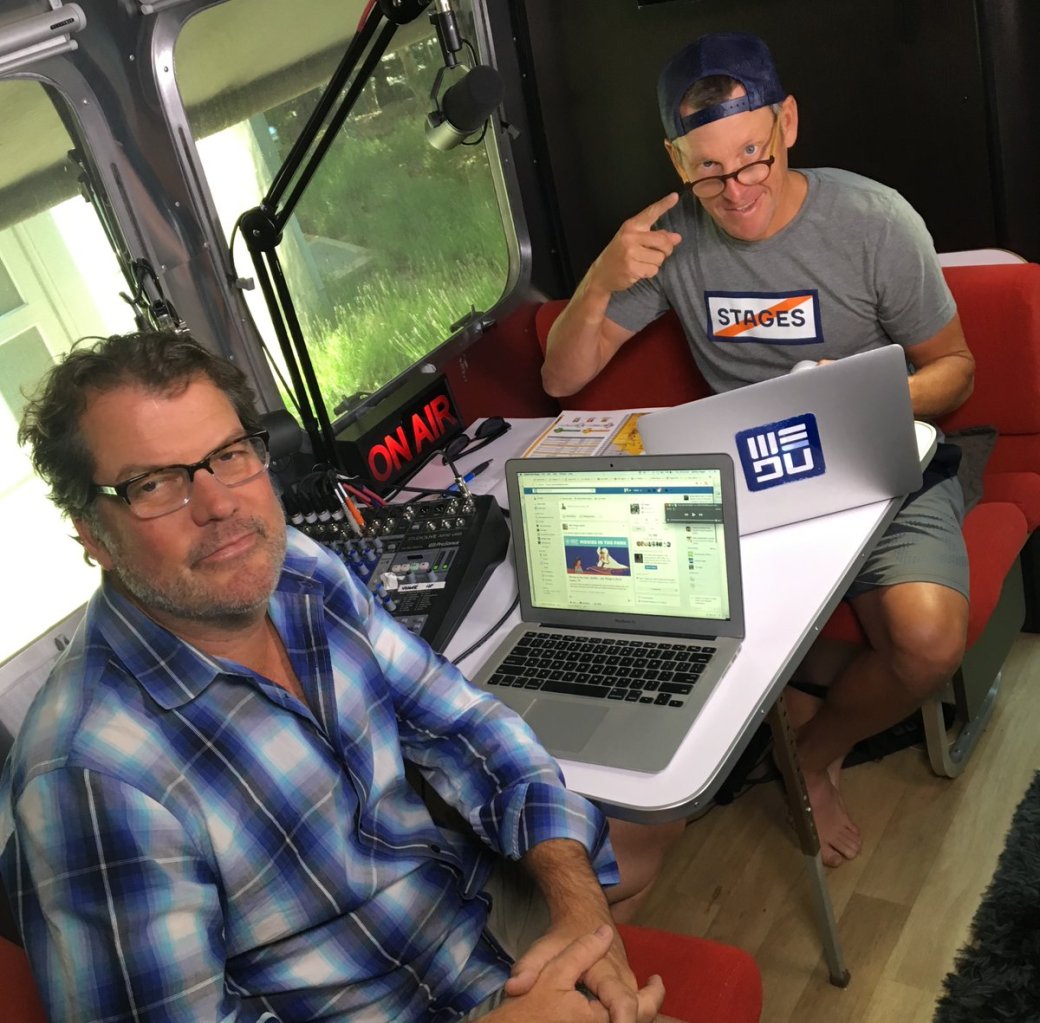
With only 3 riders in the Tour this year, some commentators and fans seemed concerned about the state of pro cycling in the US. Watching the Tour of Utah last week and hearing about the plans for the Velorama Festival, it seems that pro cycling in America is pretty healthy and has been rejuvinated by some interesting concepts, like Velorama and the Colorado Classic. Do you think we’ll see more US riders coming up through the ranks for future Grand Tours?
I’m certainly not the best equipped to answer this question, but from what I’ve seen in Austin in the last 20 years it’s stronger than ever. In Austin I’m one of the founders of www.drivewayaustin.com , along with another notable bike racer, John Korioth. We wanted to see see bike races on our motorsport complex. This series has exploded and developed a lot of great racers. I know that Criteriums are not the global standard, but being able to do an official race like this every week from late March until the end of October is huge for developing young racers. I may be speaking out of school, but I think we’ll see more of the great American talent when the American sponsors get behind cycling. It’s a well-educated, higher income fan base so it makes sense. I often compare it to motorsports where there are only so many butts that get in the seats of the cars. That is also true in cycling. Great riders need the opportunity to go to Europe, get their doors blown off for a year or two and then get their legs. It can happen.
JB was also kind enough to answer a special version of ’30 Seconds With…’, read on to see what he had to say…….
30 Seconds With….JB Hager
What was your first bike like, and what do you ride now?
It was a Peugeot Canyon Express rigid mountain bike. I was a broke college kid working at a steak restaurant. I had unpaid parking tickets and got in trouble so I traded my motorcycle with a co-worker for this mountain bike. My commute to work was about 10 miles. I would get off work at 1am; bike lights were unheard of then.
I didn’t get my first road bike until I was about 28 years old. I became friends with the neighborhood bike shop owner because of our Bikes for Kids radio charity and he let me pick what I wanted from his catalog at cost. This was around 1998 and Schwinn did a re-release of the Classic Paramount but it was a painted titanium bike built by Serotta. Honestly, that was my first road bike. I wish I still had it. I regret just about every bike I every got rid of for various reasons.
Now I ride a Madone. Well, I should say I just got back on the Madone. I quit bike racing a few years ago and the weight gain came easily. My daughter, Raleigh Hager, is a Pro-Wakesurfer. She won the women’s world title at age 10 so I hung up the bike and started driving a boat every evening. Now, she’s a teenager and interested in other things so I knew it was time for me to get back on the bike. I kept finding excuses until Lance called about the “Stages” podcast and I was like “Fu@$, I gotta get back in shape!”
I do have to say my fave bike right now is my Surly fixie. I love that thing and my legs are whipped in an hour and a half.
Books or Movies?
Books for sure. The process of going to movies annoys me. Agreeing on a movie is impossible, finding the right seat, people eating and slurping is annoying. I’d much rather wait until I can see it at home, so I read a lot. Especially humor books like David Sedaris, Chuck Klosterman and I still like to revisit some Woody Allen or Dave Barry every now and then.
What’s on your mp3 player?
I have an online music series, www.onairstreaming.com, so my musical taste is pretty eclectic, plus I’m out of Austin, Tx, which is the self-proclaimed live music capital of the world. Some of my faves might include Avett Brothers, Ray LaMontange, The National, Band of Horses, Phoenix, Alpha Rev, Fences, The XX, Blitzen Trapper, Cold War Kids, Daughter, Jack White and First Aid Kit just to give you a snapshot but my heart lies with the post-punk alt-rock I grew up with like The Police, Echo and the Bunnymen, Elvis Costello, The Cure, XTC, The Jam, R.E.M., Psych Furs, P.I.L., Talking Heads, U2, The The, The Church.
Sorry you asked yet?
If you could go back and ride any event from the past what would it be?
Tough question. There were two rides that had a decade plus jump on me out of Austin. 1st, there was the Swedish Hill Bakery ride on Saturday mornings. This is where I first cut my teeth riding with the big boys. I probably got dropped 20+ times before I could stay in for the 50-60 mi ride and then slowly graduated to the 80-100 mi rides. It was not uncommon to have 100 riders for this hammer fest. Eventually, the Austin bike scene got segregated by more organized teams and this ride fell apart.
Once I started taking an interest and getting the legs to race, there was the legendary Tuesday nighter in Austin. This was a bootleg, unsanctioned, all category race that happened just outside of Austin for over 25 years. Everyone would meet in the city and then ride an hour warmup out to the 9 mi rolling hill course. It was an unofficial 3 lap race, anyone who showed up was in. I also got dropped from this but more like 50+ times before I could finish all three laps. It was a chance to race against Cat 1, 2 guys and you never knew if Lance or a traveling pro would show up. I learned how to race there before I ever raced.
If you hadn’t worked in radio, what would you have done instead?
Most likely would have gone into the restaurant business. I was a cook at a high-end steak restaurant in Austin, the same place I traded my motorcycle for a mountain bike. I later became a waiter and I just loved the business. My college internship in radio led me away. My semi-secret passion is writing. I’ve been doing it for local magazines for the last decade. I have a monthly column in Austin Woman Magazine.

From France to Spain – Your Post-Tour Survival Guide
The time between the end of the Tour de France and the start of the Vuelta a España is packed to bursting with excellent racing -which is great news if the finishing circuits of the Champs-Elysées leave you feeling flat and uninspired. We’ve already seen some one-day action with RideLondon hosting the World Tour level London-Surrey Classic and Michal Kwiatkowski’s brilliant win at the Clásica San Sebastián since the Tour finished in Paris. As for stage racing – the Tour of Poland, Tour of Utah and the Vuelta a Burgos are currently in full flow!
We’re still a few weeks away from the Vuelta, but there’s plenty of road racing to keep you busy. Here’s your post-Tour survival guide to take you from France to Spain each year.
Tour de Wallonie
22nd – 26th July 2017
The Tour de Wallonie travels through the French speaking part of Belgium, and is part of the UCI Europe Tour. From 1974 to 1995, the race was for amateurs only. This year saw BMC’s Dylan Teuns take the overall win – fittingly for a Belgian!
Clásica San Sebastián
29th July 2017
This year, Team Sky’s Michal Kwiatkowski won the one-day classic in Spain’s Basque region, a race which is famed for its stunning coastline scenery and tricky climbs. Part of the UCI World Tour, San Sebastián usually clocks in at around 220km in length, with the race often being decided on the slopes of the Alto de Jaizkibel, a climb which the riders tackle twice and which makes its second and final appearance around 20km from the finish line.
Lance Armstrong won here in 1995 before his cancer diagnosis; other famous winners include Casagrande, Jalabert, Indurain and Valverde. British rider Adam Yates won the 2015 edition.
London-Surrey Classic
30th July 2017
The annual London-Surrey Classic grew out of the hype around the 2012 Olympics; the first edition of the race was run in August 2011 as a warm-up for the Games. The inaugural London-Surrey race was relatively short for a Classic, covering approximately 140km and taking in many of the same roads as the Olympic events a year later. Once out of the city, the riders enter the Surrey Hills Area of Outstanding Natural Beauty, and tackle a number of circuits of Westhumble through to Ranmore Common and on to Box Hill. The famed climb of Box Hill is not the only incline on the route, which also includes Leith Hill and a 50 mile circuit in and around Dorking.
This year the London-Surrey Classic joined the UCI World Tour as part of an ever expanding calendar of races. The race has become a favourite with the riders for the iconic locations taken in over the 200km course – as well as Box Hill, the route also passes through Westminster, crosses Putney Bridge, and finishes on The Mall in front of Buckingham Palace. Amateurs get the chance to ride the same roads as the pros immediately prior to the Men’s race on the Sunday of the RideLondon festival of cycling.
The race is well suited to sprinters – Mark Cavendish won the inaugural edition, this year the honours went to Katusha Alpecin’s Alexander Kristoff.
Tour of Poland
9th July – 4th August 2017
First held in 1928, the Tour of Poland is a week long stage race. Like the Tour de Wallonie, the race began life as an amateurs only event, eventually becoming a pro race in 1993. Now classified as part of the World Tour, the Tour of Poland has earned a reputation as a top quality, well organised race.
Inspired by the Tour de France, the original race even had the backing of a newspaper like it’s French counterpart; the Warsaw Cycling Club teamed up with Przeglad Sportsowy, a sporting newspaper, to organise the first edition.
The 2016 edition was won by Belgium’s Tim Wellens, and I expect by the time you read this we’ll know who the winner of the 2017 edition is!
Tour of Utah
31st July – 6th August 2017
Nicknamed ‘America’s Toughest Stage Race’, the Tour of Utah is relatively new on the scene and notorious for its difficulty – half the competitors did not finish the 2010 edition. The race is made interesting and tough through a combination of extreme weather and high altitude, which are often the deciding factors in the General Classification competition.
Founded in 2000, the inaugural edition was only open to amateurs. In 2004 that changed, and the race became known as the Tour of Utah. The format was bought and promoted by Larry H Millar Investments in 2007 – ironically, the ’07 edition was postponed due to a lack of sponsors.
One of the only UCI sanctioned stage races in the US, the Tour of Utah attracts a mainly American field, and the results table is reflective of this – Levi Leipheimer and Tom Danielson have won two editions each. Last year the race was won by Australia’s Lachlan Morton in a break from the usual US dominance.
European Road Race Championships
2nd August – 6thAugust 2017
The European Road Championships have been regulated by the European Cycling Union since 1995. Riders are chosen by their national governing body and wear national team kit.
The winners receive a Champions Jersey reminiscent of the EU flag – blue, emblazoned with gold stars. This year the event takes place in Herning, Denmark, with the 2018 event scheduled to be held in Glasgow.
The 2016 European Time Trial was won by Castroviejo, with Victor Campenaerts in second place. This year, Campenaerts has just won the Time Trial, with Maciej Bodnar, fresh from Tour de France TT victory, taking second place. In common with national and World championship competitions, the European Championships also hold U23 and Women’s events.
Fun fact – Marcel Kittel won the U23 Time Trial in 2009!
BinckBank Tour (formerly Eneco Tour)
7th-13th August 2017
The BinckBank Tour grew out of the Tour of the Netherlands, which was stalling and losing popularity in the early 2000s. The race as we now know it started life in 2005 when the Eneco energy company came on board as a sponsor. The original idea was to join forces with the Tours of Belgium and Luxembourg, and to roll all three races into one Benelux Tour. The idea faltered, and all three remain as separate races.
Bobby Julich won the newly named Eneco Tour in 2005. The race has always suited Edvald Boassen Hagen’s riding style, and he has won the General Classification twice. Last year Niki Terpstra took the GC honours, with Oliver Naesen in second place and Sagan completing the podium.
The Arctic Race of Norway
10th -13th August 2017
The Arctic Race is organised by ASO, who also run the Tour de France and the Vuelta a España amongst other high profile races. A relative newcomer, the inaugural edition was held in 2013. Fittingly, the first edition was won by the Norwegian Thor Hushovd, who is now the race ambassador. The 2016 race traced the edge of the Arctic circle and was won by Team Sky’s Gianni Moscon.
The Arctic Race takes place in northern Norway and features some of the most stunning and spectacular scenery in the whole of the UCI calendar. The 2017 edition covers 680km across 4 stages, aiming to provide terrain for sprinters and punchers, with a bit of climbing thrown in for good measure.
The Arctic Race celebrates Norwegian culture and heritage, and is proud of its reputation as a ‘race with a crazy touch’. Stage 2 will be one for the pure sprinters with an unconventional finish on the runway of Bardutoss Airport. The Norwegian fans are very vocal in their support of the race, which is fast becoming a highlight of the UCI calendar.
Colorado Classic
10th – 13th August 2017
A series of 4 one-day races, the Colorado Classic is a new event which is said to fuse the best elements of ‘Colorado’s lost Red Zinger Bicycle Classic, the Coors Classic and the USA Pro Challenge’. Red Zinger and the Coors Classic were popular American criteriums, whereas the Pro Challenge was the perfect made-for-tv extended advert for the Colorado tourist board, taking the viewer on a spectacular journey of the Colorado high lands.
For a state obsessed with all things bicycle, stage racing has never really found its feet in Colorado. The new initiative hopes to address this anomaly, and includes a ‘three day street party’ in Denver called Velorama. The organisers see Velorama as the perfect vehicle to relaunch road racing in the public imagination, relying heavily on advertising slogans such as ‘Pro Cycling is Back’, and ‘100+ cyclists, 3 cities, 1 giant party’. Colorado is well known as a creative outdoor hub, and it seems fitting that something as unique and intriguing as Velorama is taking place here.
Local lad Taylor Phinney and his teammate Rigoberto Uran of Cannondale-Drapac will be amongst the number of pro riders making an appearance, fresh from Uran’s 2nd place at the Tour de France.
Lance Armstrong and JB Hager will be covering the Colorado Classic for the Stages podcast, a perfect match as both the Velorama event and Stages take a new and pioneering approach to road racing, which could be just what the US scene requires to inject some much-needed enthusiasm at grass roots level. The 2017 Tour de France only included 3 American riders; hopefully initiatives like Stages and Velorama will go some way to rectifying this perceived lack of depth in US pro cycling.
- Keep your eyes peeled for the Freewheeling Arctic Race special with Eliot Lietaer of Sport Vlaanderen – Baloise
We Need To Talk About…Mikel Landa
Welcome to a new feature which allows you, the reader, to contribute to debates on the most controversial and exciting topics in the pro cycling world. Each week, you’ll find the topic up for discussion on the Freewheeling Twitter page – so add @FreewheelingBlog if you want to join in! If you have any suggestions for discussion topics please feel free to write in, there’s always something getting pro cycling fans hot under the helmet, there’ll be plenty to talk about!
First up, We Need to Talk About...Mikel Landa
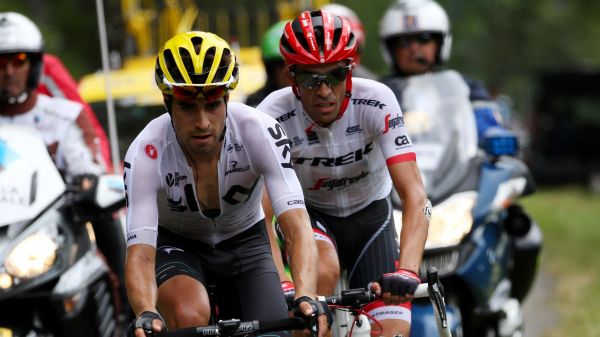
Who? Mikel Landa, Spanish rider currently signed for Team Sky. Landa is a talented climber from the Basque Country, who announced himself as a rider to watch whilst riding in support of Fabio Aru at Astana during the 2014 and 2015 seasons.
Notable Achievements? Landa had a successful 2014, winning a stage at the Giro de Trentino and providing support to Fabio Aru at the Giro d’Italia.
It was his compelling ride at the 2015 Giro d’Italia that really put his name on the map however. Landa’s job for Astana at the Giro was to ride as a domestique for team leader Fabio Aru. Aru showed patchy form throughout the race, yet his Spanish domestique was putting on a strong display, and found himself at the sharp end of the General Classification. Landa was the beneficiary of a controversial commisaires’ decision when Richie Porte was given a time penalty for accepting a wheel change from fellow Aussie rider Simon Clarke. Unfortunately, the comradely gesture damaged Porte’s GC chances as Clarke, whilst coming from the same country as Richie, was not from the same team, making the wheel change an illegal race move. Landa was promoted to third on GC as a result of Porte’s time penalty.
Although Aru finished the race ahead of Landa as second on GC, Landa was also on the podium in third. Landa had, on occasion, shown himself to be stronger than his team leader, notably on the Madonna di Campiglio climb, where he finished the stage 6 seconds ahead of Aru. Landa took two stage wins in the 2015 Giro, and moved ahead of Aru in GC by the end of stage 18, although this situation had been reversed by the end of the race. Some of the set piece battles had been between the two Spaniards Contador and Landa, and there was a feeling that the race would have been even more compelling if Landa hadn’t been ostensibly riding for Fabio Aru.
Why do we need to talk about Mikel Landa? As we saw with the 2015 Giro, the role of domestique can be a difficult one if you find yourself in an unofficial competition with your own team leader for a position in the General Classification. This year, now riding for Team Sky, Landa found himself in the eye of the storm when he rode away from Chris Froome on stage 12 of the Tour de France. Accused of ‘not looking back to find Froome’, Landa pressed ahead during the final 200 metres of the stage to Peyragudes, keeping his foot on the gas whilst Froome slowly deflated behind him, losing both time and the yellow jersey in the process.
Upon returning to the team bus, directeur sportif Nicholas Portal was seen angrily speaking with Landa in full view of the awaiting media, the facial expressions and gesticulations leaving the viewer in no doubt as to the nature of the confrontation. Landa’s words to the press following stage 12 didn’t do much to smooth the situation. “The stage victory was being played out, it didn’t occur to me to look back” being one of many pointed comments about the race situation and Sky’s curtailing of his hopes and clipping of his wings.
Landa finished the Tour in 4th place, just 1 second off the podium – something he blamed on the tactics employed by the team. Although Landa has taken great care to point out that he has no hard feelings towards the eventual winner Chris Froome, he did speak to the Spanish press where he made his feelings about Team Sky plain. Claiming that he was never allowed to reach his full potential during the 2017 Tour, particularly on the Izoard stage, Landa spoke of his promising attack as the race leaders neared the summit – which ultimately came to nothing. “Froome was telling me to go slower, slower, slower. ..I was very angry that day because I sacrificed myself without making any gains for the team”.
Standing on the podium in Paris with his Sky colleagues as winners of the team competition, Landa cut a desolate figure, unable to raise a smile with his feelings etched into a frustrated and pained facial expression. “I don’t want to be in this situation again, it’s so frustrating!”. Landa is rumoured to be transferring to the Movistar team next season, where it is said that he will lead the team at the Giro, a race which seems to be well suited to his riding style, with Quintana targetting the Tour. This should negate any problems with leadership questions. Chris Boardman summed up the Landa-Froome situation in one pertinent sentence – “That’s what happens when you make a team out of team leaders”.
Here’s what Freewheeling’s Twitter followers had to say about Landa venting his feelings after the race to the Spanish press…..
